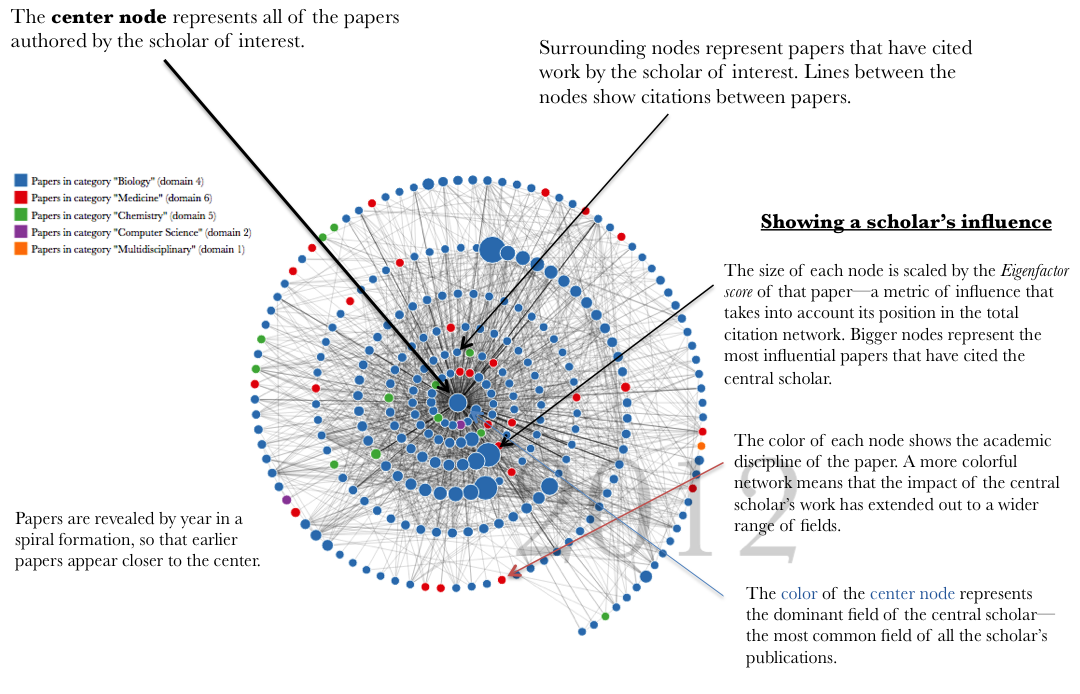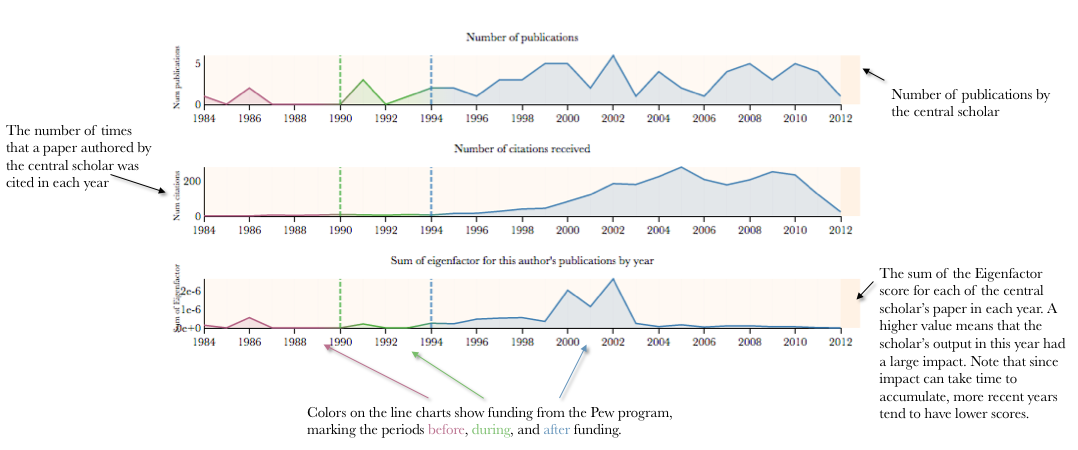Nautilus - About
About the Nautilus Diagram
Back to the interactive visualizationThe scholarly literature is a vast store of formalized human knowledge, interconnected by citations between publications.
Looking at these citations is one way to measure the influence of scholarly research. Metrics like h-index—prominently displayed by services such as Google Scholar—measure influence by counting citations. But with more complete data about these citations getting better and more accessible every day, we can do better.
The scholar visualization tool shows the influence a central collection of publications has had across different fields, telling the story of how this influence has developed over time. The collection of interest (representing, for example, an author, or an emerging field) is shown as the central node in a network, and other papers that have cited papers in this collection are shown as circular nodes surrounding the central one. The animation progresses forward in time; as new papers appear, they send out links representing citations, both to the central node and to other nodes that appear in this network.

In order to reduce the visual complexity of the graph, not all of the papers that have cited the central collection are represented. Rather, the most influential papers (by Eigenfactor score) are selected to be visualized as nodes in the network.
Below the network diagram, line charts show key indicators over time:

Contact
Please contact us if you have any questions or comments about the tools, data or other content.